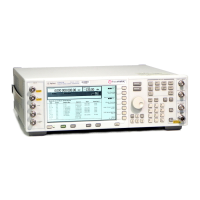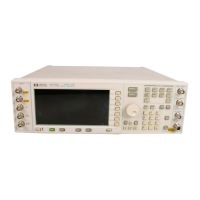Chapter 16 451
W-CDMA Uplink Digital Modulation for Receiver Test
Understanding the PRACH
within the SF=16 group, has sub-trees (OVSF codes) that are used in the channelization/spreading of the
message part.
A base station can simultaneously receive 16 different UEs, and all base stations use the same 16 signatures.
Using the BCH (broadcast channel), a base station tells each UE which signature to use and then uses the
signature to determine which UE it is communicating with.
Scrambling Codes
The scrambling code, in most cases, is unique to the base station and it identifies the base station that the UE
is communicating with. In an actual UE to base station transmission, the base station tells the UE which
scrambling code to use. This scrambling code is then used in connection with the signature to uniquely
identify the UE to the base station. The addition of the scrambling code is the second part of the spreading.
There are 8192 (0 to 8191) different scrambling codes. The value selected as the scrambling code is actually
the seed to generate the code sequence. The same scrambling code is used for both the preamble and
message part. However the preamble uses only the first 4096 chips of the selected scrambling code.
Message Part
The message part is transmitted as part of the PRACH after the UE receives the AICH from the base station.
It contains the information necessary for the UE to establish a link with the base station. This information is
transmitted in two parts, a control part and a data part. These two parts form the message part. Each part has
its own power level that influences the overall message part power. See “Power Control” on page 453 for
more information.
There are three groups of parameters that the ESG lets you set for controlling the message part: control part,
data part, and the message part as a whole. The message part can be set to transmit within either a 10 or
20 ms time period called a TTI (transmission time interval).
Structure
Each 10 ms message part is divided into 15 slots (two slots per access slot). Each of the 15 slots carry the
two parts that compose the message part, the control part and the data part. These two parts are transmitted
in parallel. This is similar to the DPCH (dedicated physical channel) that consists of a control channel
(DPCCH, dedicated physical control channel) and a data channel (DPDCH, dedicated physical data
channel). Figure 16-4 shows how the message part is formatted with the control part and data part.

